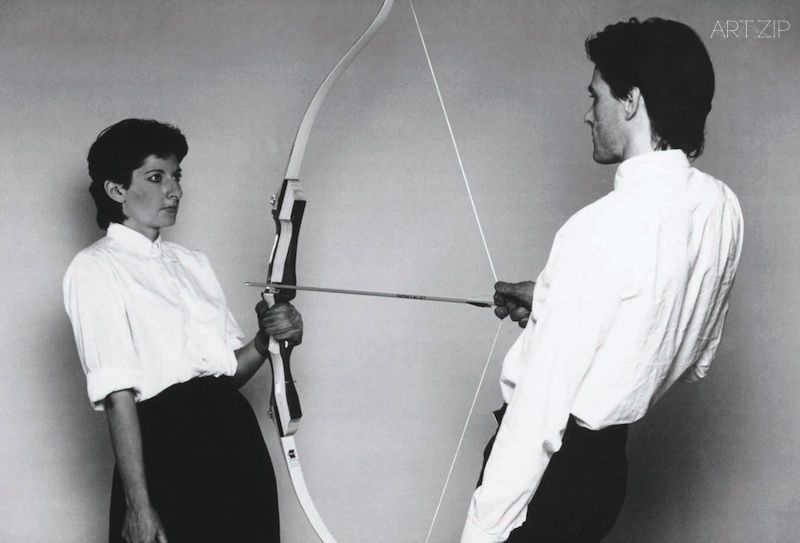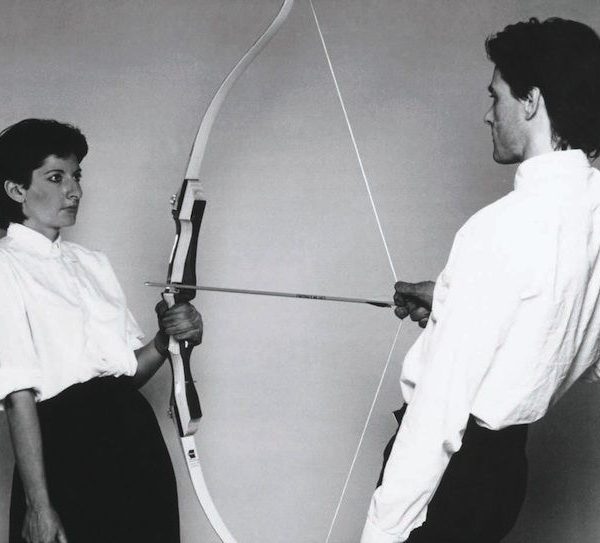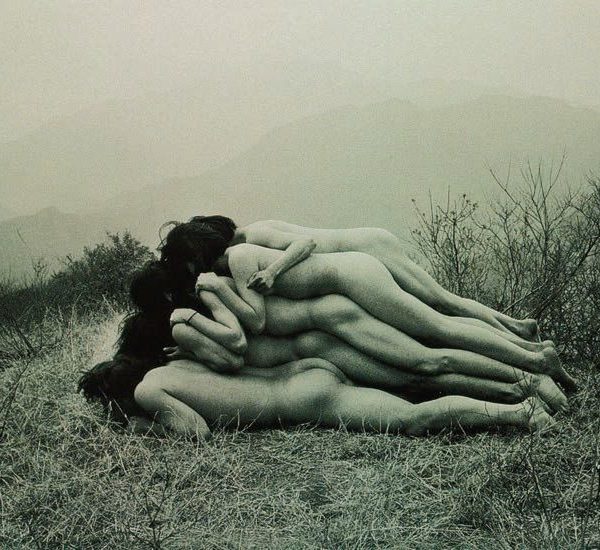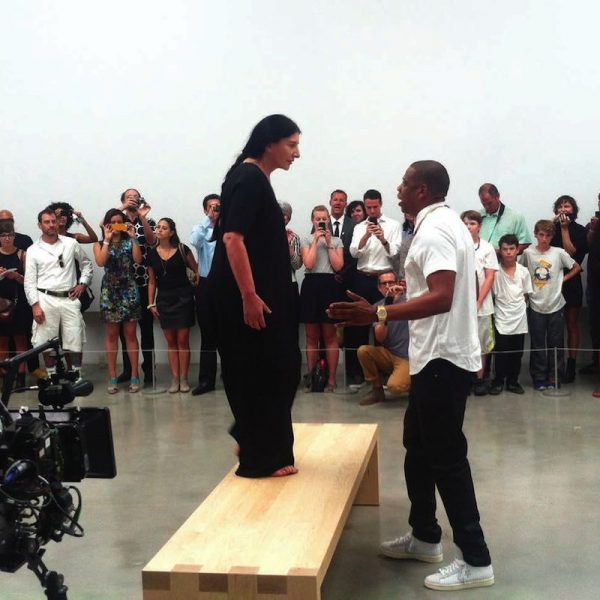
The history of performance art, from its birth among the futurists, to Dadaism, Surrealism and Tristan Tzara, John Cage, Robert Morris, Yves Klein, Joseph Beuys, Yoko Ono, Zhang Huan, Ma Liuming, and to, ‘finally’, its recent, alleged death, compels this form of art to resolutely defy definition and boundary.
行為藝術的歷史——從未來主義、達達主義、超現實主義以及 特里斯坦·查拉(Tristan Tzara)、約翰·凱基(John Cage)、觀念藝 術、羅伯特·莫里斯(Robert Morris)、伊夫·克萊因(Yves Klein)、 約瑟夫·博伊斯(Joseph Beuys)、小野洋子(Yoko Ono)、張洹、馬 六明,以及,“最終”,這種藝術形式最近的死亡——強迫這種藝 術形式絕決地蔑視定義以及界限。
For about a century, performance art goes through a myriad of fields, and that of the theatre is one that performance art relentlessly engages with. But performance art is to be differed from that witnessed in the theatre, because firstly the performer is the artist himself/herself, first and foremost, and is not a character. All that is required by theatre also becomes expendable, be it the proscenium, the script, the rehearsal, or the fourth wall.
近一個世紀以來,行為藝術闖入闖出於無數領域,而劇場藝術自 然是其中一個與行為藝術最為緊密地聯繫在一起的藝術領域。 但是行為藝術得以與劇場藝術相區別,因為表演者就是藝術家 本身,而不是什麼自身之外的、由幻覺所承認的角色。“藝術家在 場”。所有被劇場所要求的事物都變得可有可無,無論是舞台、劇 本、排練或是那第四堵牆。
Performance art negotiates with all available mediums for breakthroughs. From its inception – that is both shaky and marvelous – performance art hijacks the boundaries of visual art with it. However alien it had been to the field, it is recognized positively as a medium that is charged with unpredictability, as a force that is able to bring out the unknown from within. From within – from within the field, and from within the body. This homecoming perhaps is no less substantial than that made by Descartes. This body that was abandoned, after a revolution of the machine leaving a world of despair behind at the Fin de siècle, is awakened once again.
行 為 藝 術 與 所 有 媒 介 交 流 ,以 不 斷 完 成 突 破 。自 形 成 以 來 ,行 為藝術便劫持著視覺藝術的邊界。無論它對這種類而言是多 麼地怪異,行為藝術一直被積極地想像為一種充滿著未知性 的媒介,一種能夠從自身內部拉扯出不可知未來的力量。從自身内部————从视觉艺术的内部,也从身体的内部。对于当下的人來說,這個回歸可能與笛卡爾的縮減式回歸一般重要。這個 被遺棄了的身體,在機械革命於世紀末帶來絕望的時候,再次 被喚醒了。
This body that has ever since been lifted to an unmatchable height after the body of Jesus – as told by Jean-Luc Nancy – is really yet the only certainty regarding performance art. A simplest – and extremely problematic because of its simplicity – way to define performance art: a work of art involving a body. But one can already anticipate with excitement another breakthrough from this definition. “Impatient”, are those who do performance art, says RoseLee Goldberg in her seminal, canonical history of performance art. Artists embrace this form, treat it as a condition of possibility to rebel against traditional medium, painting and sculpture; to refuse being absorbed by commodification; to question and deconstruct the myth of gender; to ridicule and add to the flame of politics; and most generally and fundamentally, to refresh the idea and the reality of art.
這個被提拔到無可比擬高度的身體——或許僅低於耶穌那至 高的身體,如讓·呂克·南希(Jean-Luc Nancy)所說——或許是 行為藝術唯一一件可以確認的事物。一個最簡單的——也因為 它的簡單性而值得被質疑——定義行為藝術的方法:一個由身 體完成的、關於身體的藝術。但我們已經可以開始興奮地期待 對這個定義的超越。藝術史學者羅斯李·哥德堡(RoseLee Gold- berg)在她的經典行為藝術史著作中,形容那些進行行為藝術 的人們為“不耐煩的”。藝術家們擁抱這種形式,視其為反抗傳統 媒介——繪畫、雕塑等——的可能性;以其來拒絕商品化的誘 惑;以其來質問以及解構性別的神話;以其來譏笑並投入進政治 的火焰之中;並,最根本地,刷新藝術的理念及現實。
To paraphrase a question raised by one privileged, aged theatre directrice, in a talk in a certain Chinese Opera Academy in Beijing: is eating feces on a street of London performance art? It is to her a rhetorical question, certainly. But today, or even then, about seven years ago, one can seriously offer a positive answer. If it is in the intent of the artist (who is transformed in that moment of faith to be an artist, even if he/she is not named such), if he/she treats this act as an act of a performance art, then yes, it could be a performance art. One can almost be certain it is already history. After all, what is problematic of this inquiry – which could be still rather popular, one imagine – is such a twofold: feces as unmatchably disgusting; feces as alien from the body generally, as any other matter. So the action can be reduced to: doing something extremely disgusting and simultaneously making oneself suffer in a public sphere. What could enlighten this inquiry pertaining to performance art, is a reevaluation of feces as what is essential to human body, as Dominique Laporte did in his marvelous treatise Histoire de la merde.
一位德高望重的女戲劇導演曾在北京一所最高等戲曲學院的 講座中提出:在倫敦的大街上吃屎,難道是行為藝術嗎?對她來 說,這當然只是一個修辭性的問題。但是,在今天,或就算在七年前,我們可以嚴肅地給出一個正面的答案。如果藝術家是這樣想 像它的行為的(通過完成這個想像以及行為,這個人將轉變成一 位藝術家,無論它是不是從來就是“藝術家”),如果它把這個行 為視作行為藝術,那,是的,這可以是一個行為藝術。我們幾乎可 以想像曾經有人完成過這個事件。無論如何,這個問題——我 們可以想像這個問題仍然是受歡迎的——困境是兩面的:屎的 可惡被提拔到一個前所未有的高度;屎是如其他事物一般外化 於人的身體的。所以這個行為的描述可以被轉化為:在公共空間 從事一件極其噁心的行為,並讓自己成為這行為的唯一受害者。 多米尼特拉·波特(DominiqueLaporte)的偉大的著作《屎的歷史(History of Shit/Histoire de la merde)》其中對屎和身體的關 係的重新評估能夠讓這個問題獲得新生。
After acknowledging the countless attempts to bridge ‘high art’ with popular culture, perhaps it is yet too early to call the performance made by Marina Abramović (the grandmother of performance art) and Jay-Z (the king of Hip-Hop music, billionaire) the death of performance art. It is rumoured that for six hours, Jay-Z rapped at Abramović, with only her gaze in return. Occasionally they danced, in a rather embarrassing way. In defence of no one: it has been done before, and it will be done again before long. Also, it is tempting to suspect that the death of performance art will be incredibly more catastrophic, and that it will entail a death of something greater than itself.
在承認了無數次高等藝術與大眾文化結合的嘗試之後,或許宣 稱瑪麗娜·阿布拉莫維奇(Marina Abramović,行為藝術教母)以 及Jay-Z(Hip-Hop音樂之王,百萬富翁)的合作為表演藝術之死 略顯魯莽。據稱,Jay-Z對著阿布拉莫維奇完成了長達六個小時 的說唱,而作為回應,後者給予前者以凝視。他們偶爾一起蹩腳 地跳舞。我們並不是要為任何人做辯護,然而這樣的事情有人做 過,未來肯定還會有人這樣做。我們可以想像,行為藝術真正的 死亡將比這事件更具毀滅性,將帶領別的什麼更龐大的事物走 向死亡。
Eventually, what is presented is a 10 minutes video that resembles to a great extent music video proper than a documentation of performance art. And it is shown in the official video – which is indeed a music video of the song Picasso Baby – that Abramović is not the only artist involved. George Condo, RoseLee Goldberg and Diana Widmaier Picasso were there as well, among many others (here goes the title of Alicia Eler’s wonderful article on Hyperallegic: “The Artist Is Not Present But the Brand Sure Is”). Audience – secondary audience, those who sees the evolution of the event from rumors to fragments then to more rumors and eventually a perfectly produced video – should be disappointed, and a number of they are; but perhaps, one can at- tempt thinking beyond the simple accusation, and come to a rethinking of performance art: what makes a performance art (body?)? What makes a music video (at least two bodies)? What makes audience of performance art smile excitedly, as they all did in the video (is there ever any smile as such in performance art or in Hip-Hop music video)? What if the performance (the emission of ‘art’ in the phrase is on the verge of revealing something significant) was documented in the fashion most performance art enjoys? And, can one still have faith in performance art, as a form of art that in a painful way pertains to some of the most urgent issues, such as our relationship with our own bodies, and others’?
最終,觀望的人們等來一段十分鐘的視頻,這視頻看起來更像 音樂錄影帶而不是行為藝術的記錄影像。在這個官方製作的視 頻中——這也的確是《Picasso Baby》一曲的音樂錄像帶—— 我們看到阿布拉莫維奇並不是唯一在場的藝術家。喬治·康多(George Condo),羅斯李·哥德堡(RoseLee Goldberg)以及 巴勃羅 · 畢加索(Pablo Picasso)的孫女戴安娜·威德瑪耶·畢加索 (Diana Widmaier Picasso)也在場(艾麗西·亞薩克拉莫妮(Alicia Eler)的精彩文章的標題:“藝術家不在場,但那品牌在場”)。 觀眾——第二級觀眾,那些目睹了這個事件的轉變的人們—— 應當失望,而他們中的一部分的確非常失望;然而,或許我們能 夠嘗試超越那簡單的控訴,並嘗試重新考慮行為藝術:行為藝 術是什麼(身體?)?音樂錄像帶是什麼(最少兩個身體?)?為什 麼這視頻中的人們帶著這樣的笑容(這樣的笑容在任何行為藝 術或Hip-Hop音樂錄像帶中出現過嗎?)?如果這個行為(“藝術” 兩字的消失似乎在揭示某些重要的事實的邊緣)被慣常的行為 藝術記錄方式記錄呢?最終,我們能不能仍然信仰行為藝術,這 種痛苦地凝視緊迫問題——我們與自我身體的關係,以及這與 他人身體的關係——的藝術形式?




